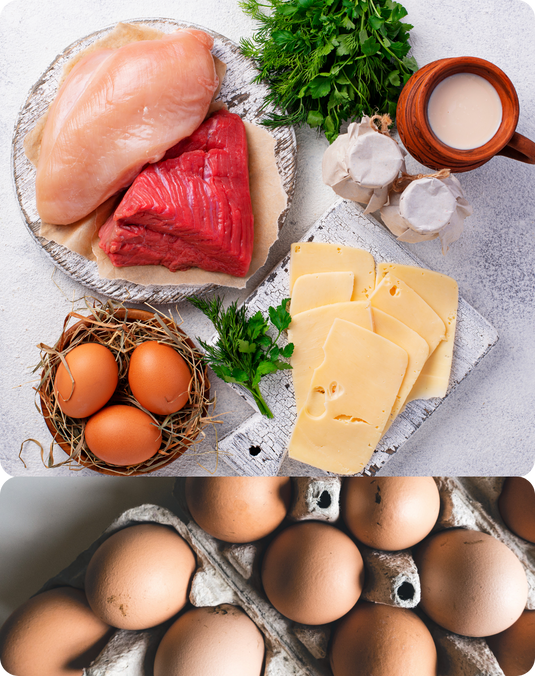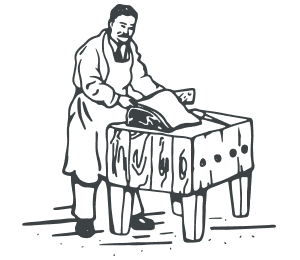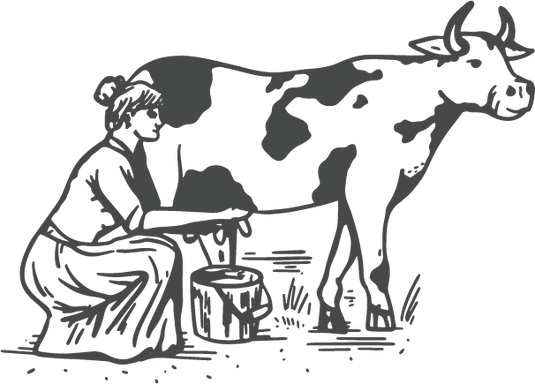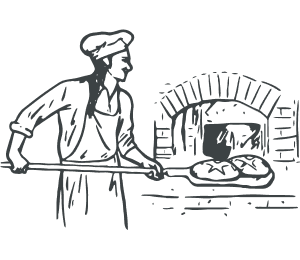

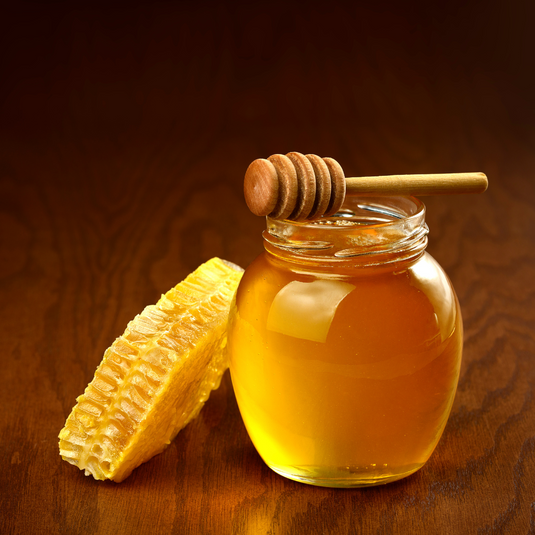
1. Raw and Unfiltered in Glass
Honey is heated with minimal warmth to help it flow more easily during extraction from the honeycomb using a centrifuge (honey extractor). This gentle temperature closely matches the natural warmth inside a beehive, ensuring the honey stays raw and preserves its natural enzymes, nutrients, and beneficial compounds. Honey is no longer considered raw once it’s heated above 95°F, which exceeds the natural hive temperature. Significant degradation of its beneficial enzymes, vitamins, and other bioactive compounds begins at 104°F. To maintain its integrity, our honey is never heated above 90°F, preserving all of its natural benefits. True raw honey is only gently warmed during extraction and bottling.
The warm honey is carefully canned in glass jars, never plastic, to preserve its purity and natural flavor. Honey can sometimes pick up a plastic-like taste when bottled in plastic, which is why we exclusively use glass. Glass also ensures that the honey remains free from microplastic contamination and retains its beneficial properties, keeping it as fresh and natural as possible.
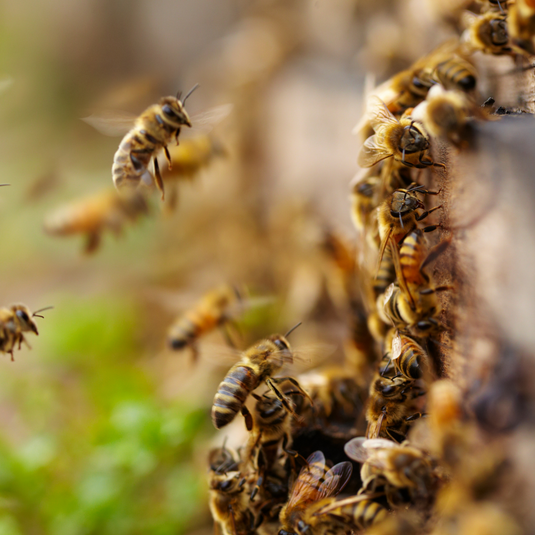
2. Humanely Treated
Just as our farm partners prioritize the health and well-being of cows, lambs, pigs, and more, our beekeepers do the same to keep the bees healthy and productive.
“Inhumane” beekeeping practices generally refer to actions that harm the bees, compromise their well-being, or disrupt their natural behaviors, causing unnecessary stress or suffering. This can include overharvesting honey, leaving the bees without enough to survive, neglecting regular hive inspections, or over-interfering with the bees and disrupting their natural processes.
Our beekeeper partner conducts regular hive inspections, ensuring they never over-interfere with the bees’ natural processes. Bees are naturally diligent about maintaining a clean hive by removing dead bees, cleaning brood cells, and defending against invaders. The beekeeper’s role is to support these natural behaviors, enhancing the cleanliness and health of the hive. Additionally, the hives are designed to provide proper ventilation, moisture control, and adequate space for the bees to build and thrive.
Taking honey from bee hives does not hurt the bees. Much like dairy cows, which produce more milk than their calves need, bees naturally create more honey than is required for their colony’s survival. Beekeepers harvest only the surplus honey, ensuring that the bees have enough to sustain themselves throughout the year. Just as dairy farmers carefully manage their herds, responsible beekeepers make sure that the bees’ well-being is prioritized, leaving plenty of honey behind for them to thrive.
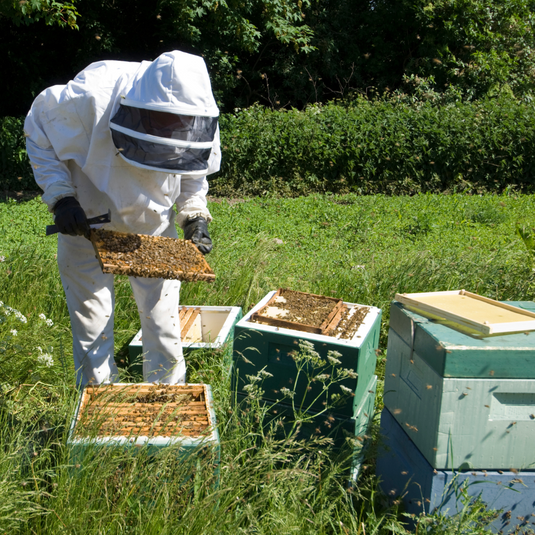
3. Zero Toxic Chemicals
In overcrowded or poorly maintained hives, antibiotics and chemical treatments are often used to manage bacterial infections and control mite infestations. However, this approach fights biology with chemicals, and such interventions always carry consequences.
At Nourish, our beekeeper partner uses zero pesticides, antibiotics, or chemical treatments in the hives. Just as our farm partners create healthy living conditions for cows, lambs, pigs, and more, our beekeeper ensures a natural, clean environment for the bees to thrive. This includes providing diverse, thriving pastures for bees to forage on rich nectar and pollen. Regular hive inspections maintain cleanliness, preventing the buildup of pathogens, pests (like varroa mites), and diseases. Damaged or contaminated frames are removed, ensuring a healthy, chemical-free environment for the bees.
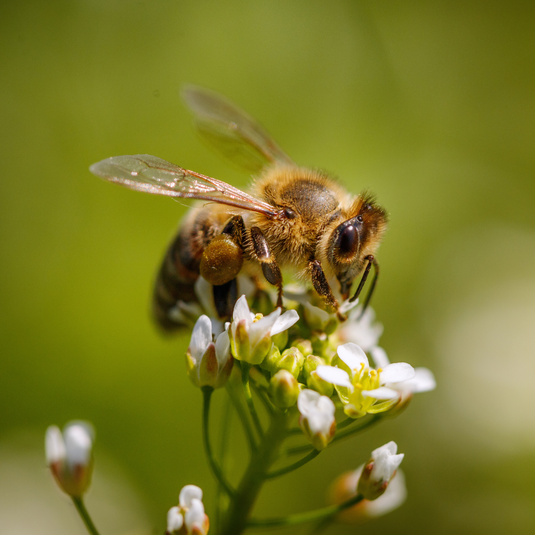
4. Maximal Nutrients
The bees forage on a diverse array of Michigan wildflowers, ensuring they have access to a wide range of pollen and nectar. Some of the flowers they gather from include milkweed, clovers, lupines, purple coneflower, bee balm, and black-eyed susan—all of which are natural Michigan wildflowers abundant in our local environment. This variety provides the bees with a rich blend of nutrients, including vitamins, minerals, and beneficial compounds. The more varied the flowers the bees visit, the greater the variety of nutrients they gather, resulting in honey that is naturally rich in both flavor and health benefits. This diversity in foraging, combined with minimal heating during bottling, preserves the full spectrum of nutrients in the honey.
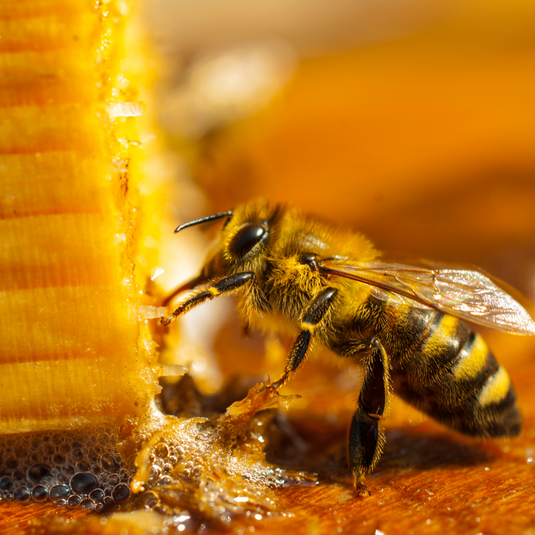
5. Sustainable Beekeeping, Supporting Natural
Our farm partner follows sustainable beekeeping practices to support this incredible system. Have you ever stopped to think about how bees make honey? It’s an extraordinary process that plays vital roles in both the environment and our food systems.
Forager bees leave the hive to gather both nectar and pollen from flowering plants. Using their specialized proboscis, which functions like a natural straw, they draw nectar into a separate “honey stomach” that is distinct from their digestive system. As they forage, pollen clings to their fuzzy bodies and is packed into specialized “baskets” on their hind legs, ready to be transported back to the hive. This pollen is essential nutrition rich in protein for the colony’s developing bees.
Once back at the hive, the forager bees transfer the nectar to house worker bees, who begin processing it by chewing and mixing it with enzymes for about 30 minutes. This enzymatic action breaks down complex sugars into simpler forms. The nectar is then spread across honeycomb cells, where worker bees fan it with their wings vigorously to help evaporate moisture. As the water content decreases, the nectar thickens into honey, and the bees seal the honey-filled cells with a beeswax cap, preserving this nutrient-dense food for the colony’s future needs.
Beyond honey production, bees perform an essential ecological service. As they move between flowers, they transfer pollen, facilitating plant reproduction. This pollination is crucial for biodiversity and food production. Bees are responsible for pollinating approximately 75% of flowering plants and 35% of the world’s food crops, making them indispensable to both natural ecosystems and human agriculture.
